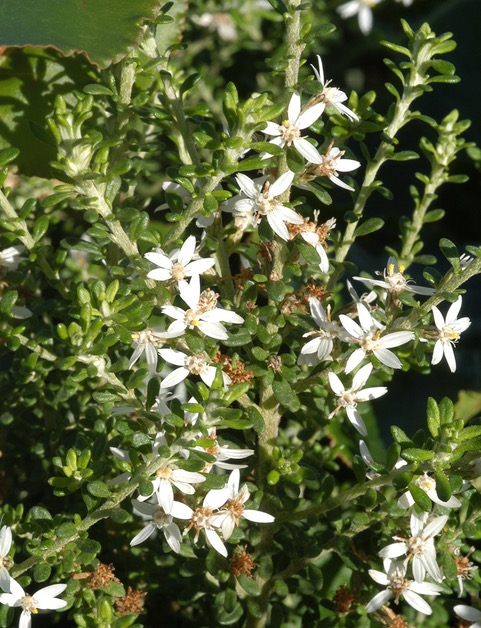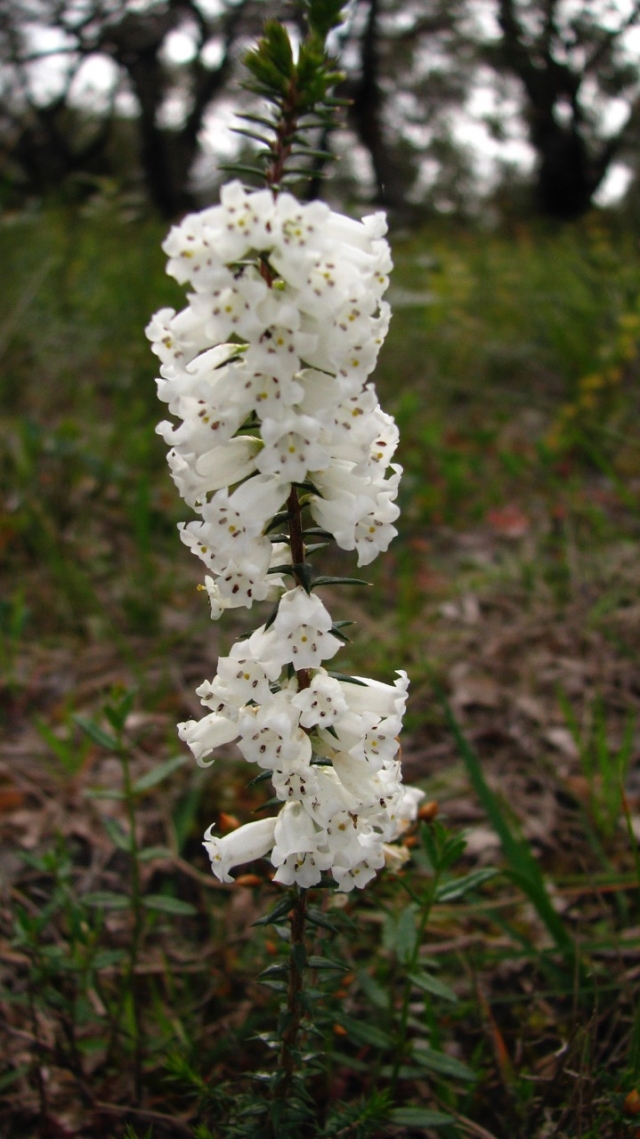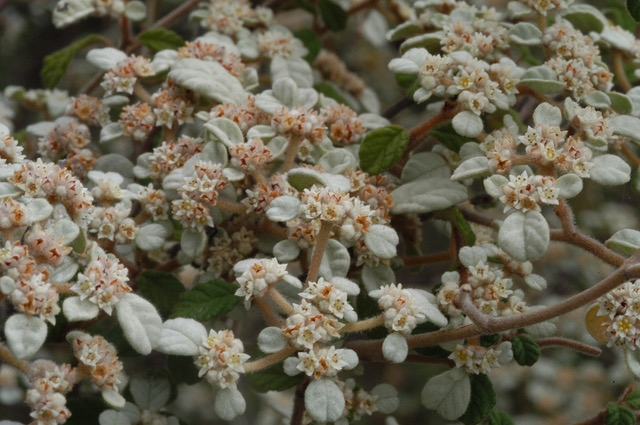As we enter mid-winter the lack of really good rains is obvious when walking through the bushland.
However, there is much to look forward to as many plants, shrubs and trees are coming into bud, and some have already started flowering. Look out for the following:
Prickly Cryptandra, Cryptandra tomentosa var 1, is found near coastal heath and woodland. It is a compact shrub to 20cm high and has small stiff cylindrical leaves with rolled under margins in alternating clusters and white tubular flowers that appear in winter and spring. The stems and flowers are covered with tiny star-like hairs. The five petalled flowers are highly perfumed when fresh. With age, the flowers turn pink to darker pink-red. The fruit splits into three leathery fruitlets.
 Prickly Cryptandra
Prickly Cryptandra
Twiggy Daisy-bush, Olearia ramulosa var. ramulosa, which is a small attractive shrub to 1m high with many short twiggy branches, found in grasslands and woodlands. The leaves are narrow, dark green with rolled edges about 5-15mm long. The flowers have between two and ten white ray florets which surround a number of yellow tubular florets. The flowering season is variable. It is widespread, attractive to butterflies and a few plants are in flower now.
 Twiggy Daisy-bush
Twiggy Daisy-bush
Common Heath, Epacris impressa, grows into an attractive, erect shrub about 1m high and is widespread in heathland and woodland. It bears masses of five-petalled tubular flowers in shades of pink, red and white in the axils of the prickly crowded, tapering short leaves.
 Common Heath
Common Heath
The flowers have five impressed indentations at the base of the flower-tube—hence the name. This shrub flowers throughout the year, but mainly in winter and spring. It is in bud at the present time.
 White Common Heath
White Common Heath
Dusty Miller, Spyridium parvifolium, a small shrub to about 2m high, is found in forest, heath and heathy-woodland. The leaves are small, rounded, and hairy with deeply impressed veins. The underside of the leaf has dense greyish hairs and the tiny whitish honey-scented flowers are in clusters surrounded by distinctive downy floral leaves. This shrub is common and widespread flowering mainly in winter to spring.
 Dusty Miller
Dusty Miller
In your rambles you will see many plants preparing to burst into a colourful spring flowering. Don’t forget to take your copy of Flowers of Anglesea and Aireys Inlet, so that you can identify the plants of our bushland, and if you have a hand lens you will see even more beauty and wonder.
References:
Flowers of Anglesea and Aireys Inlet. Ed. M. MacDonald
Flora of the Otway Plains and Ranges 2, E. Mayfield
Flora of Melbourne 3rd. Ed.
Plants of Melbourne’s Western Plains 2nd. Ed.
Photos: courtesy of M. MacDonald.
Philippa Hesterman